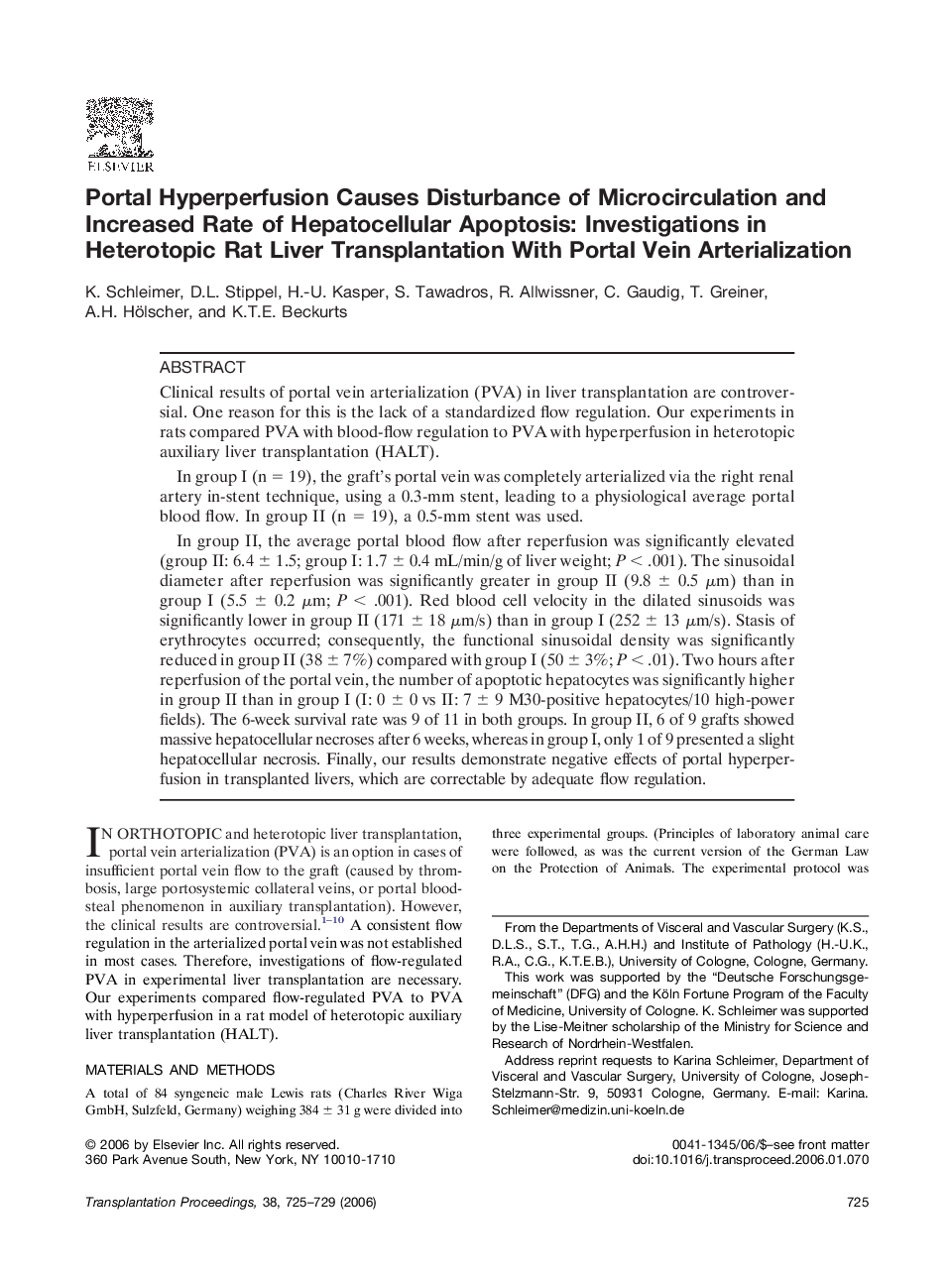| Article ID | Journal | Published Year | Pages | File Type |
|---|---|---|---|---|
| 4262997 | Transplantation Proceedings | 2006 | 5 Pages |
Abstract
In group II, the average portal blood flow after reperfusion was significantly elevated (group II: 6.4 ± 1.5; group I: 1.7 ± 0.4 mL/min/g of liver weight; P < .001). The sinusoidal diameter after reperfusion was significantly greater in group II (9.8 ± 0.5 μm) than in group I (5.5 ± 0.2 μm; P < .001). Red blood cell velocity in the dilated sinusoids was significantly lower in group II (171 ± 18 μm/s) than in group I (252 ± 13 μm/s). Stasis of erythrocytes occurred; consequently, the functional sinusoidal density was significantly reduced in group II (38 ± 7%) compared with group I (50 ± 3%; P < .01). Two hours after reperfusion of the portal vein, the number of apoptotic hepatocytes was significantly higher in group II than in group I (I: 0 ± 0 vs II: 7 ± 9 M30-positive hepatocytes/10 high-power fields). The 6-week survival rate was 9 of 11 in both groups. In group II, 6 of 9 grafts showed massive hepatocellular necroses after 6 weeks, whereas in group I, only 1 of 9 presented a slight hepatocellular necrosis. Finally, our results demonstrate negative effects of portal hyperperfusion in transplanted livers, which are correctable by adequate flow regulation.
Related Topics
Health Sciences
Medicine and Dentistry
Surgery
Authors
K. Schleimer, D.L. Stippel, H.-U. Kasper, S. Tawadros, R. Allwissner, C. Gaudig, T. Greiner, A.H. Hölscher, K.T.E. Beckurts,
